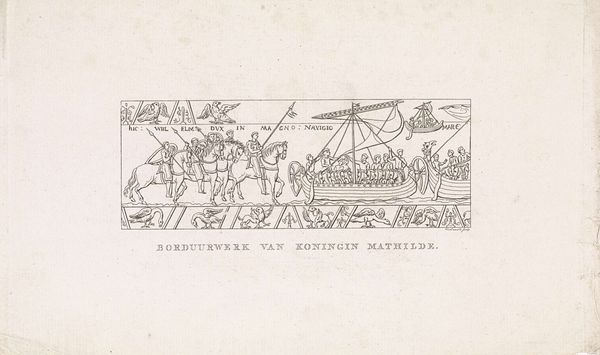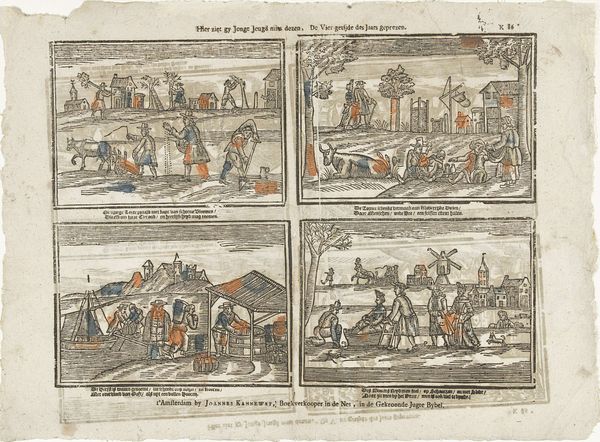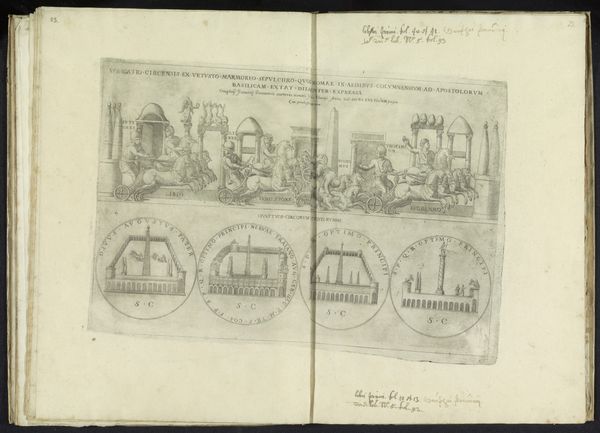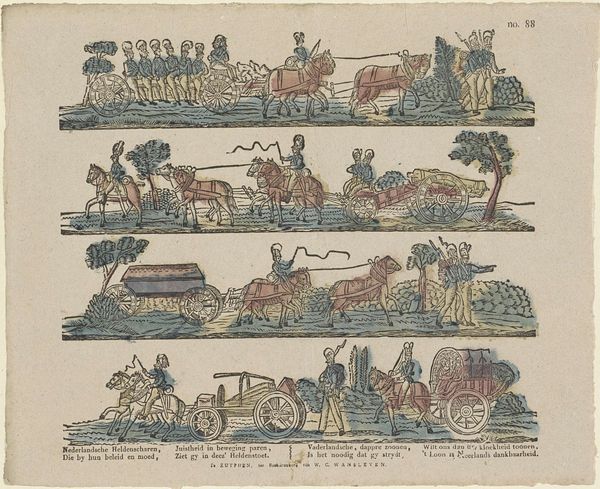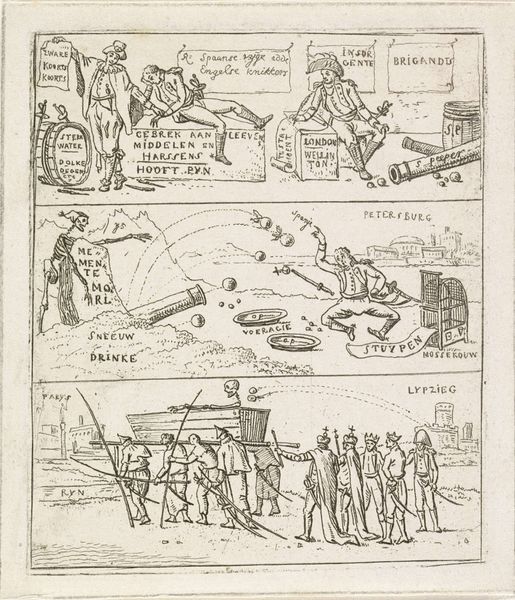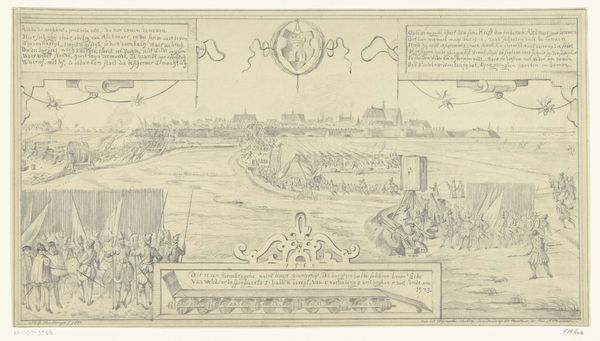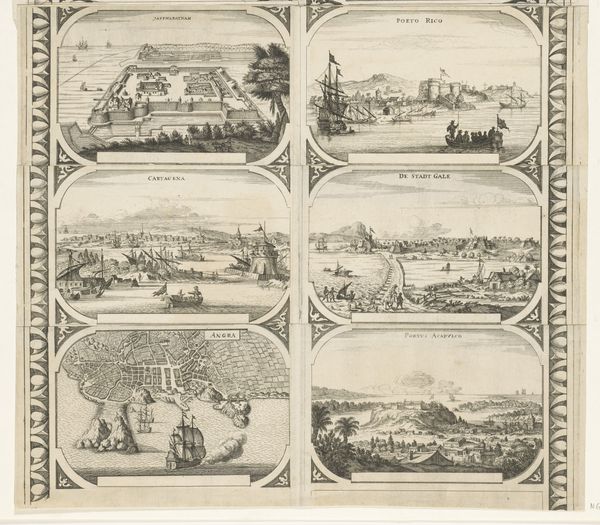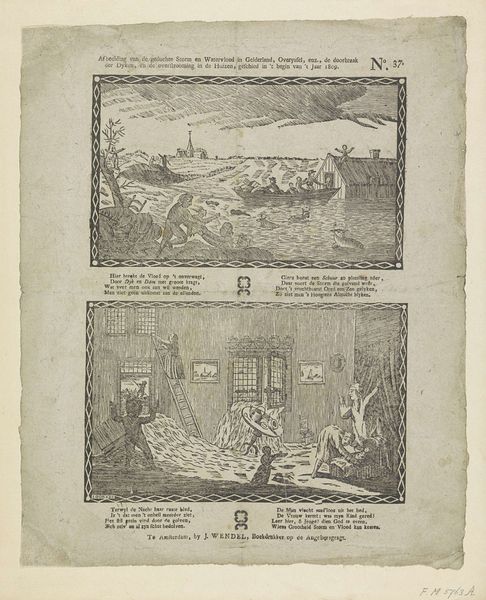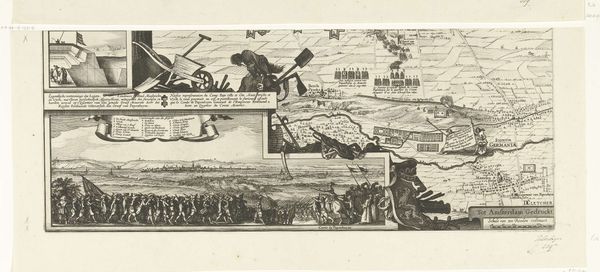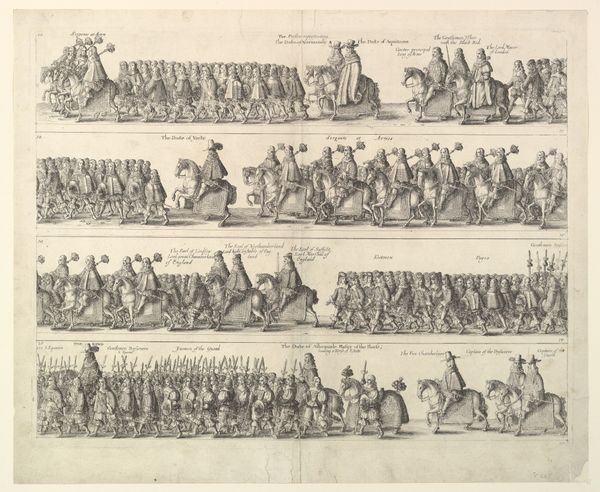
print, etching, paper, engraving
#
narrative-art
# print
#
etching
#
caricature
#
paper
#
history-painting
#
engraving
Dimensions: height 330 mm, width 415 mm
Copyright: Rijks Museum: Open Domain
Editor: This etching, "Den verdrukker gestraft," which roughly translates to "The Oppressor Punished," by P.J. Masier, dates somewhere between 1827 and 1860. It's printed on paper. It feels very narrative-driven, almost like a political cartoon strip. What can you tell me about it? Curator: This work is interesting when considered in the context of its production. Masier, listed as "printer and bookseller," was engaging in the widespread production and dissemination of imagery that likely served a very specific political purpose. What does "oppressor" signify, and for whom would that message resonate? Editor: I suppose that depends on who's consuming the image. It almost feels revolutionary, right? Like a call to arms against tyranny. Curator: Precisely. The use of print – engraving and etching specifically – allowed for mass production, and thus broader social and political influence. It's a material act meant to generate specific cultural outcomes. Think about the cost, the labor. Were these prints hand-colored, do you think? Editor: Good question! I can't tell, but if they were, wouldn't that dramatically increase production time? Curator: Exactly! Each choice impacts how the image functions within its contemporary society. Is it accessible, affordable, readily distributed? These questions tie the object to its material conditions, connecting artistry to industry and, most importantly, social critique. How might our understanding of this print change if it were unique rather than mass-produced? Editor: That's fascinating. Seeing it as a mass-produced object really changes how I understand its potential impact and reach at the time. Thanks for your help. Curator: My pleasure!
Comments
No comments
Be the first to comment and join the conversation on the ultimate creative platform.

